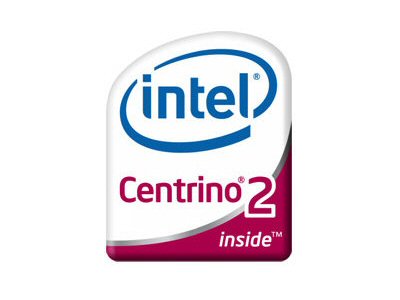Tech focus: Centrino 2 - do you need it?
Intel’s new notebook platform is nearly upon us, but what benefits does it bring?

Next week sees the launch of Intel's next generation Centrino platform. But what is it and, if you want to buy a laptop, should you wait for it?
Previously codenamed Montevina, the platform - a combination of an Intel Core 2 Duo processor, chipset and wireless module - aims to provide faster performance and a longer battery life.
As for new design possibilities, Intel says that the processor and other components within Centrino 2 are about 40 per cent smaller than the predecessor Santa Rosa platform.
Stepping up
Centrino 2 is the fifth-generation Centrino platform and this isn't the biggest step-up in functionality. Netherless, Intel has decided to introduce the '2' suffix, the first time it has marketed a new Centrino version as something actually new.
The platform hasn't been without its setbacks. The launch was originally slated for June at the Computex show in Taipei, but there were a couple of problems, notably with the new graphics module.
So let's start with the processor; the platform supports Penryn, the 45nm Core 2 Duo processor. Clock speeds will range from 2.26 GHz to 3.06 GHz. There is a power improvement compared to previous platforms - 29W compared to 34W.
Sign up for breaking news, reviews, opinion, top tech deals, and more.
Then there's the Intel Mobile 4 Express chipset (formerly codenamed Cantiga) which will be teamed with Intel's new GMA X4500 integrated graphics chip.
Second generation technology
The platform also supports a second generation of Intel's so far unsuccessful Turbo Memory technology, designed for the caching of data on a flash memory chip - resulting in faster startup. The chipset also includes support for DisplayPort. Gigabit Ethernet is also supported using a new controller, previously codenamed Boazman.
There are also changes afoot in the wire-free networking capabilities. This is the first Centrino platform with built-in support for WiMAX. Well, we say 'built-in', what we actually mean is 'built-in if the manufacturers want it and you buy it somewhere that actually uses WiMAX'.
WiMAX remains a fledgling tech in the US and virtually non-existent in the UK, so we believe Intel is still taking a big risk with it - especially given the prevalence and increasingly inexpensive nature of 3G broadband.
WiMAX way to go
Intel was due to have included 3G support natively in the last version of Centrino, until it ended its partnership with Vodafone and decided that WiMAX was the way to go.
If WiMAX is your game, Montevina offers the combo WiFi/WiMAX Link 5150/5350 mini-PCIe adapter (code-named Echo Peak) or the Intel WiFi Link 5100/5300 mini-PCIe adapter (code-named Shiloh) and the add-on card WiMAX (802.16) (code-named Dana Point).
At Intel's Spring IDF in Shanghai, Dadi Perlmutter, executive vice-president and general manager of Intel's Mobility Group, talked up the native support of Blu-ray, as well as the benefit of using solid state storage.
Centrino 2 components
Perlmutter also revealed that Centrino 2 components are about 40 per cent smaller.
At IDF, Perlmutter also offered a first peek at Intel's 2009 notebook platform codenamed Calpella.
Perlmutter said Intel will bring Anti-theft Technology to the market towards the end of the year. Designed to complement manufacturer's security solutions, this corporate tech focuses, said Perlmutter "on asset recovery, theft management and data protection."
The corporate-orientated Centrino 2 solution is suffixed with 'vPro' in line with Intel's business desktop branding.
Dan (Twitter, Google+) is TechRadar's Former Deputy Editor and is now in charge at our sister site T3.com. Covering all things computing, internet and mobile he's a seasoned regular at major tech shows such as CES, IFA and Mobile World Congress. Dan has also been a tech expert for many outlets including BBC Radio 4, 5Live and the World Service, The Sun and ITV News.